The Role of Ukraine in the World Space and Rocket Building History
28th Apr 2022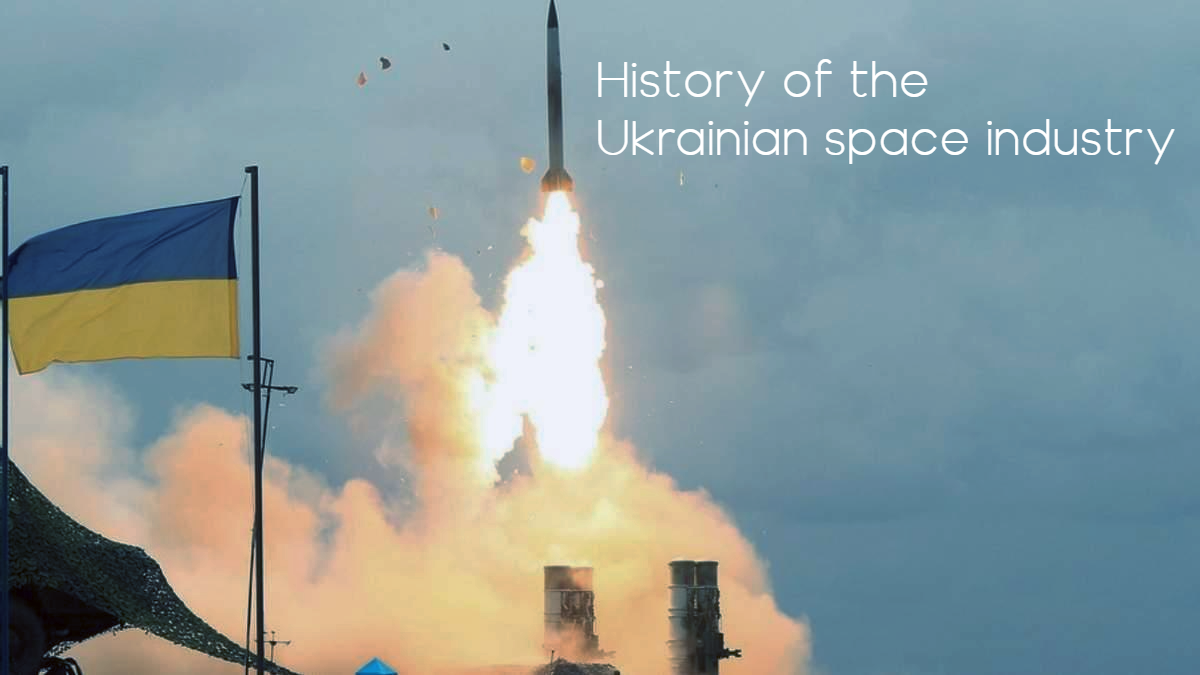
On 12th April, the world traditionally celebrates Cosmonautics Day, and Ukrainian space history plays a part in this celebration. It was on this day in 1961 that the first man, Soviet cosmonaut Yuri Gagarin, went into space. The event became the starting point for a great space race between the two superpowers – the Soviet Union and the USA, in which the Russians, despite having a head start, eventually lost. After the collapse of the Soviet Union in 1991, its successor Russia could no longer stand alone against the powerful US Space machine. Ukraine, which together with independence also inherited from the USSR the fourth largest aerospace industry in the world, played a significant role in this. And although Russia still considers itself a space leader, history has shown that without Ukrainian aerospace companies, scientists, and engineers, Russia cannot even claim third place.
Towards the World Cosmonautics Day and in support of the Ukrainian people, who selflessly continue to defend their independence from Russia, Orbital Today will dispel any myths and tell you the true Ukrainian space story.
Ukrainians who conquered space
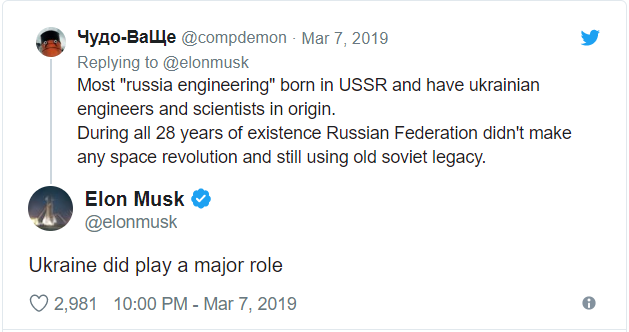
Rocket engineer Oleksandr Zasiadko
The first known Ukrainian in history who influenced the development of rocket science was Oleksandr Zasiadko. A native of the Poltava region, a descendant of the Ukrainian Cossacks, and an outstanding engineer, he created military rockets that showed their full power during the Russian-Turkish war of 1877-1878. In 1976, the International Astronomical Union considered the contribution of this Ukrainian significant enough to name one of the Moon craters after him.
The “Kondratyuk track”
Another native of the Poltava region, Ukraine, Yuri Kondratyuk, who lived from 1897 to 1942, is considered to be one of the founders of world cosmonautics. In 1916, he calculated the lunar trajectory, which was later used in the American Apollo lunar program and was called the “Kondratyuk track,” marking an important milestone in the space history of Ukrainians.
Spacecraft designer and rocket engineer Sergei Korolev
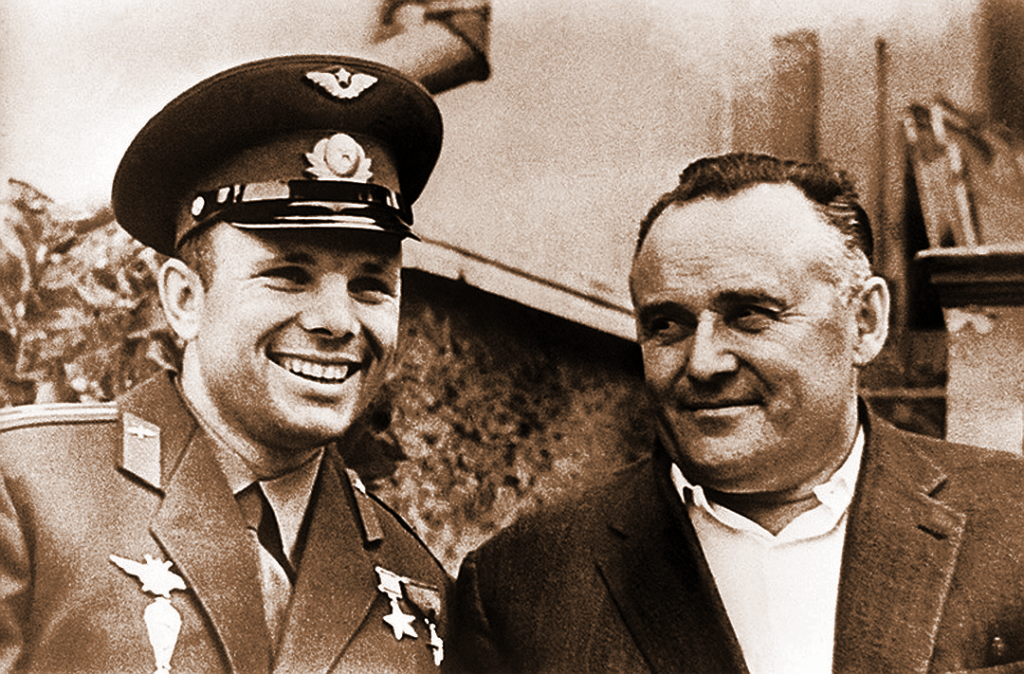
However, the most prominent Ukrainian in the history of space exploration can rightfully be considered Sergei Korolev. It was thanks to this outstanding scientist and designer from Zhytomyr, that the USSR achieved its first successes in rocket science and astronautics, outstripping the USA in the space race. From 1948 to 1957, a design bureau led by Korolev created the first Soviet ballistic missiles and multi-stage launch vehicles for space flights on the basis of the German V-2 rocket, making a significant breakthrough not only in the aerospace industry of the Ukrainian Soviet Socialist Republic. He became the director of the Soviet space program.
In 1957, for the first time in the history of mankind, this development made it possible for the USSR to launch the first artificial Earth satellite into the near-Earth orbit. And four years later, in 1961, the first cosmonaut flew into orbit – not without the help of Ukrainian scientists, engineers and enthusiasts. In the last years of his life, Sergei Korolev worked on such projects as the creation of an orbital station and the launching of a man to the Moon, but the Ukrainian never had a chance to implement these ambitious space projects. He died in 1966 during cancer surgery.
First Ukrainian in space: Pavlo Popovich
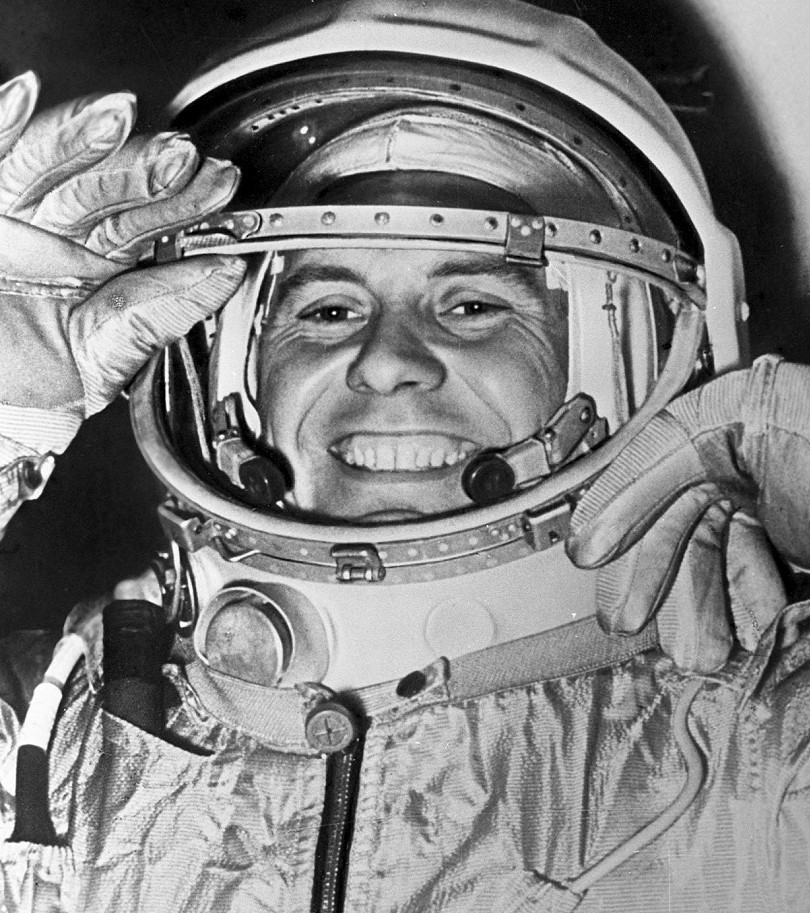
A native of the Kyiv region, Pavlo Popovich (1930-2009) was the fourth astronaut in space, the sixth man in orbit, and the first Ukrainian in space. In 1960 he was selected to participate in the Soviet space program among the best twenty military pilots. After a year of training, he was considered one of the most likely candidates for the first space flight, but Yuri Gagarin won this competition. However, just a year after Gagarin, Popovich also reached space.
On 11th August 1962, the Vostok-3 spacecraft, piloted by the third astronaut of the USSR Nikolaev, entered the near-Earth orbit; a day later, Vostok-4, piloted by Popovich, did the same. It was the first joint flight of two ships which lasted for three days. During this flight, for the first time in history, Popovich controlled the ship’s orientation system in space manually. After fully completing the flight program, Nikolaev and Popovich each landed their ships with high accuracy and almost simultaneously on a predetermined site. In his report on the completed mission to the head of the USSR, Nikita Khrushchev, Pavlo Popovich said in Ukrainian: “I am the first Soviet cosmonaut from Ukraine …”
In 1974, the astronaut made his second and last space flight, piloting the Soyuz-14 spacecraft as part of the first mission to the Salyut-3 space station. After that, he headed the USSR Cosmonaut Training Center and, in 1999, became the head of the Union of Cosmonauts of Independent Ukraine. For his services, Popovich was twice awarded the title of Hero of the Soviet Union, orders of honour, and the Order of Prince Yaroslav the Wise. A mountain range in Antarctica and a minor planet in the solar system are named after him.
Ukrainian cosmonauts: Leonid Kadenyuk
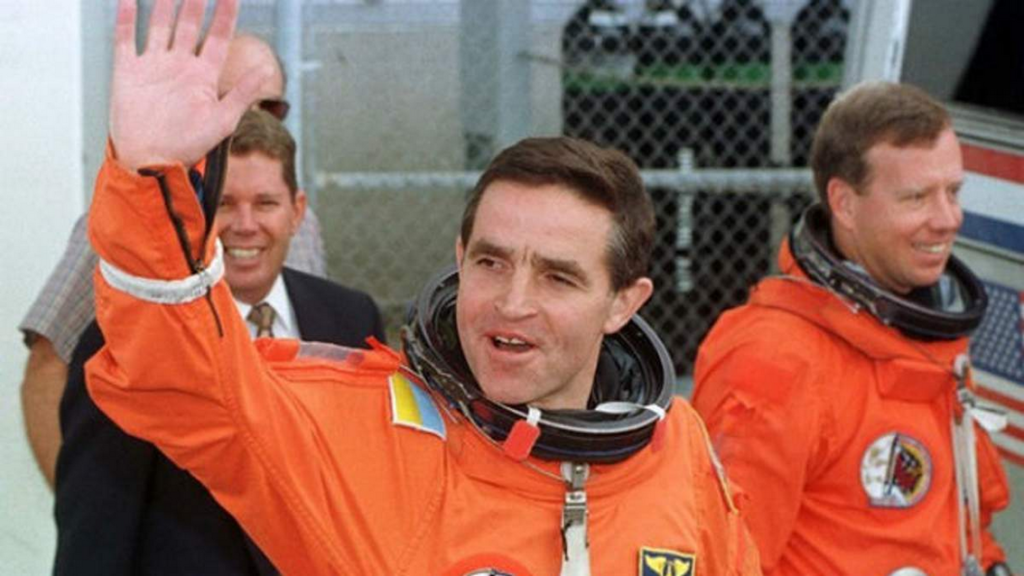
There are also outstanding cosmonauts in Ukrainian space history. In November 1997, a 46-year-old native of Chernivtsi, Ukraine, made a space flight lasting 15 days and 16 hours as a payload specialist on the Columbia shuttle, which was an important event in the Ukrainian space industry. Thanks to Kadenyuk the flag of independent Ukraine was raised and Ukrainian anthem sounded in space for the first time.
Ten years later, Heidemarie Martha Stefanyshyn-Piper, a NASA astronaut of Ukrainian origin (her father was from Lviv region), took over the baton from Kadenyuk. From 2006 to 2008, she made 5 spacewalks with a total duration of 33 hours and 42 minutes.
Famous Ukrainian Rockets
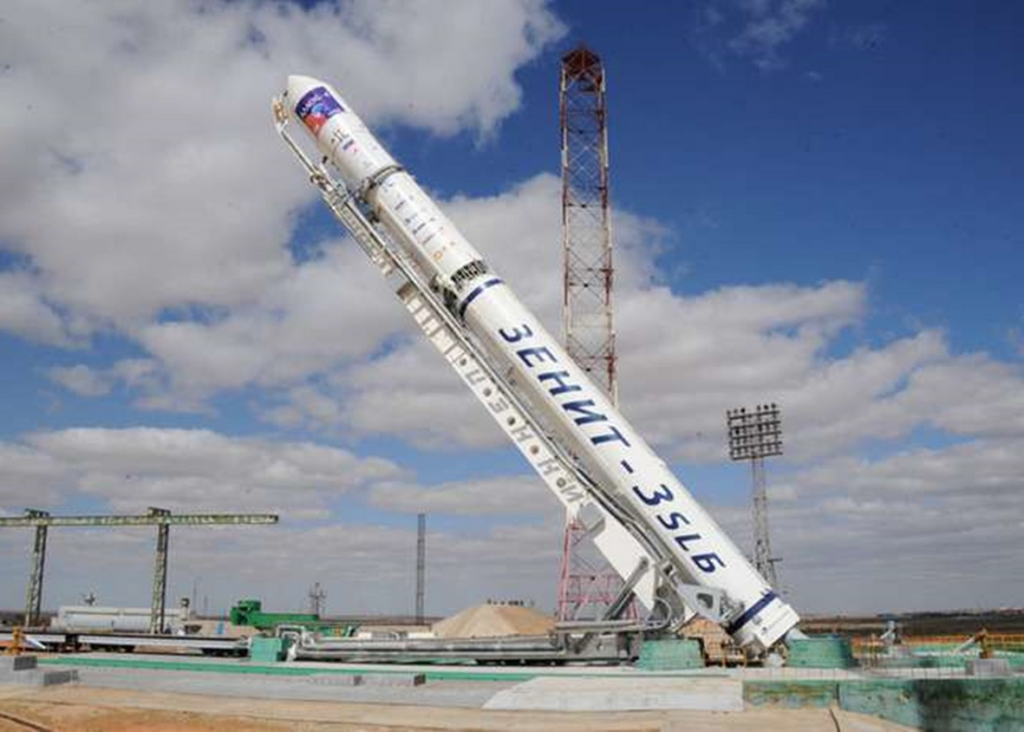
You may be surprised, but Ukrainian aerospace industry started in 1954! This is when the main Ukrainian rocket and space industry companies were founded in Dnipropetrovsk (now Dnipro, Ukraine) – the Yuzhnoye State Design Office and the Yuzhmash machine-building plant (currently the State Factory «Production Union Pivdennyi Machine-Building Plant named after O.M. Makarov»). Over the entire history of their existence, these giants have created dozens of ballistic and space rockets, rocket engines, satellites, and innovative technologies not only in the space industry but also in other areas of the economy. Here are just the most famous Ukrainian rockets:
LV Kosmos
The first family of light-class vehicles for launching spacecrafts into up to 1,700km high near-Earth orbits. There were 5 modifications made in Ukraine, the last of which, Cosmos-3M, was decommissioned in 2010 due to its highly toxic fuel. The total number of LV Kosmos launches since 1961 has exceeded 600, more than 1,000 satellites have been put into orbit, and the number of accidents has been less than 8%.
IBM SS 18 Satan
A heavy two-stage silo-based ballistic missile with a range of up to 16,000km was produced from 1970 to 1988. It could hit up to 10 targets simultaneously in conditions of poor visibility and was considered practically invulnerable to missile defence systems, including American ones.
LV Zenith
A family of 2- and 3-stage launch vehicles used from 1985 to 2014 with 75 successful launches out of 84. This launcher family, perhaps, can be considered the most successful in Ukrainian aerospace history, which was confirmed by Elon Musk himself, calling Zenith the best launch vehicle in the world after his Falcon in an interview with CNN in 2014.
LV Cyclone
A family of launch vehicles, the prototype of which is the IBM SS 18 Satan made in Ukraine. The Cyclone-2 and Cyclone-3 rockets were used from 1969 to 2009, with a total of more than 200 launches. Cyclone 4 and Cyclone — 4M models have been under development since 2009.
Dnepr space launch vehicle
Dnepr is a 3-stage launch vehicle based on the SS-18 Satan and named after the largest Ukrainian river Dnipro. From 1999 to 2015, it was launched 22 times, 21 of which were successful. Now, Dnepr launch vehicle is out of service.
International space projects involving Ukraine
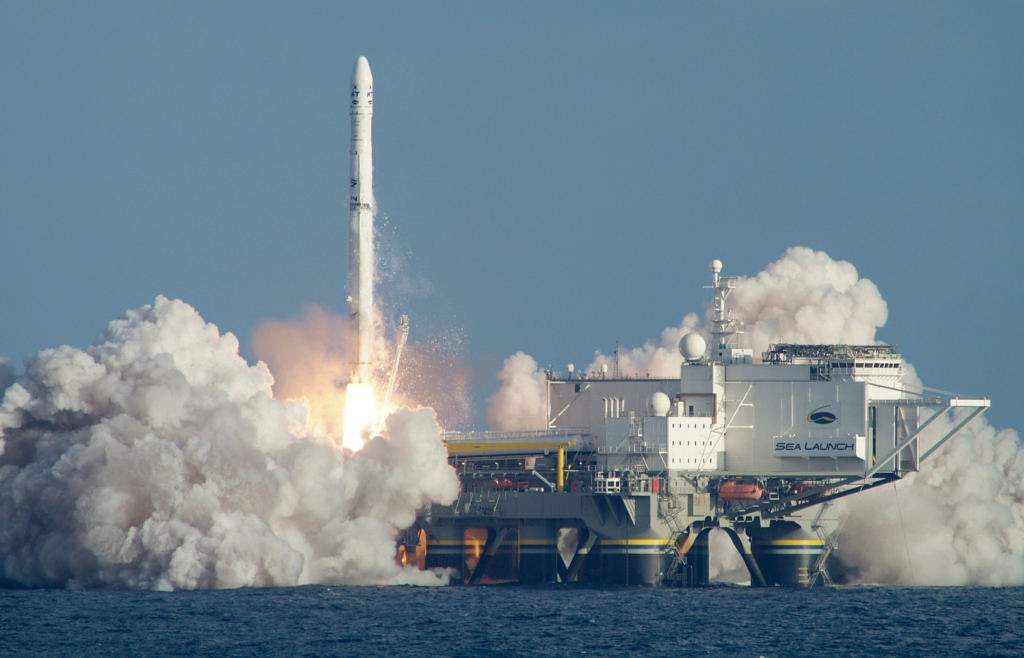
Sea Launch
Participation in the space project of launches from the floating cosmodrome Sea Launch occupies perhaps the most significant place in Ukraine’s space program. In addition to the Yuzhnoye State Design Office and Yuzhmash, the consortium included Boeing, the Russian RSC Energia, and the Norwegian company Aker Solutions, which provided an ocean platform for launches. For 15 years, from 1999 to 2014, LV “Zenit – 3SL” made 36 launches, 33 of them were successful — a very high indicator of the capabilities of Ukraine’s space industry.
In 2014, due to the annexation of Crimea by Russia and the military conflict in Donbas, Ukraine left the project and stopped production of Zenith, since some of the missile components, in particular, engines, were supplied by Russian enterprises. Russia could not find a worthy replacement for Zenith either and was forced to freeze the project as a result.
LV Vega
Vega, a four-stage expendable launch vehicle for launching small payloads, was developed by ESA member countries from 1998 to 2012. The RD-843 rocket engine for the fourth stage was created in the Ukrainian Yuzhnoye State Design Office and manufactured at the Yuzhmash Production Association. From 2012 to 2021, Vega completed 18 launches, 16 of which were successful.
LV Antares
In the late 2000s, the American company Orbital attracted Yuzhnoye to develop the first stage of the Antares heavy rocket (Taurus 2). The tasks of Yuzhnoye included development and control of the production of fuel tanks and the first stage pneumohydraulic system, including high-pressure cylinders, at the Yuzhmash plant. It is noteworthy that the diameter of Antares is the same as that of Zenith – 3.9m. From 2013 to 2021, this rocket completed 15 launches, 14 of which were successful.
Firefly Aerospace
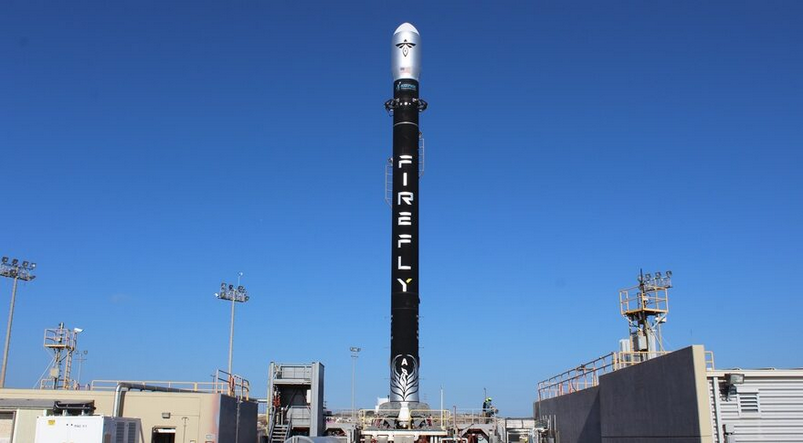
In 2017, the investment fund Noosphere Ventures Partners bought the assets of the private American aerospace company Firefly, saving it from bankruptcy. One of the Fund’s managing partners, Ukrainian space entrepreneur Max Polyakov, has engaged rocket and space engineers from Dnepr City to work on the Firefly Alpha light rocket as part of the Firefly Aerospace Ukraine division. At the beginning of the year, Firefly Alpha made its first test flight and is already preparing for its first commercial flight.
It should be noted that Max Polyakov has also been actively developing the space industry in Ukraine before. In 2015, thanks to him, EOS Data Analytics was created, which developed a platform for processing and analyzing satellite images made from space, and in 2021, Polyakov acquired Dragonfly Aerospace, a small satellite manufacturer from South Africa, opening a representative Dragonfly Aerospace Ukraine office.
Cyclone 4M
The joint Ukrainian-Canadian project started in 2017. Under the project, the American company Maritime Launch Services will build a spaceport in the Canadian province of Nova Scotia to launch a two-stage medium-class rocket, Cyclone 4M, developed by Yuzhnoye Design Bureau. According to the Ukrainian developers, the rocket will be able to launch 3,700 kg to a 450 km LEO or 3,000 kg to a 1,200 km SSO.
The construction of the spaceport, the development of Cyclone-4M and its first launch are estimated at $240 million. In June 2019, Canadian authorities approved the launchpad project and granted permission for construction work. It is expected that the site will be commissioned in the next two years and will be able to maintain up to 8 launches per year.
Ukrainian space program (1992 -2014)
As you can see, Ukraine’s space program has been efficiently implemented not only in the Soviet period but also afterwards. At the time of the USSR collapse, there were about 130 rocket and space industry-oriented companies in Ukraine. In 1992, the Ukrainian Space Agency was founded to take over all issues related to the support and coordination of their activities. It supported the priority programs such as:
- Scientific space research
- remote sensing
- Satellite communication systems
- Development of land-based navigation infrastructure
- Space activities for national security and defence
- Space complexes
- Development of space technologies
- Development of research, testing and production facilities
However, over 25 years of economic and political crises, heavy dependence on Russia and the aggressive policy of the northern neighbour led to the almost complete decline of Ukraine’s space industry, along with the Ukrainian space program.
Since Ukraine does not have its own spaceport, all Ukrainian rocket launches were conducted from the Baikonur cosmodromes in Kazakhstan, Plesetsk in Russia and Sea Launch in the Pacific, controlled by Russia. Following the Russian aggression against Ukraine in the Donbas and the annexation of Crimea in 2014, Ukraine withdrew from cooperation with Russia in the defence and space spheres. Therefore, Ukraine lost orders for military satellites, Russian components for its missiles, launch sites, and ground control points in Evpatoria, Crimea. All this forced the State Space Agency of Ukraine to shift its focus to cooperation with other countries.
The future of Ukraine’s space industry
President Zelenskiy, elected in 2019, has resolutely taken up the revival of Ukraine’s aerospace potential. In 2021, a new Ukraine’s space program for the next 5 years was put forward, the funding for strategic areas and the Ukrainian space agency was increased, and at the beginning of 2022, Space X launched the second-ever Ukrainian satellite Sich 2.
Ukraine’s plans for space exploration look really ambitious. Unfortunately, the implementation of most of them will have to be postponed:
- Cyclone 4M launches from a launch site in Canada in late 2022/early 2023.
- The project of the first floating Ukrainian spaceport in the Kherson region.
- The project of a permanent base on the surface of the moon (developed by Yuzhnoye Design Bureau)
- Launches of at least 5 Ukrainian satellites within 5 years.
- Attracting foreign investment in the space industry and increasing funding.
- Expansion of cooperation with ESA, in particular, within the framework of the Artemis Accords.
- Creation of comfortable conditions for the work in Ukraine for private companies in the rocket and space industry.
Considerable attention is also paid to the education of a new generation of Ukrainian space engineers and scientists. Fortunately, there are plenty of such talents in Ukraine. In 2016, the Ukrainian project Mars Hopper received the People’s Choice award at the NASA hackathon. And in 2017, two more Ukrainian projects, an orbital station model and the concept of a smart settlement, were included in the TOP 25 list by NASA.
Unfortunately, Russia has not been able to come to terms with Ukraine’s desire to be independent. Today, it unleashed a bloody war in this peaceful, intelligent and beautiful country and put the entire Ukrainian people on the brink of survival.
But the Ukrainians do not give up. They continue to create and look to the future with optimism even during the war. Most space enterprises and companies (KB Yuzhnoye, Yuzhmash, SETS, Promin Aerospace, Skyrora, Orbit Boy, and others) continue to work and help collect aid for the Ukrainians and the army to defeat the Russian aggressor. In addition, Ukraine has every chance to join the European Union under an accelerated procedure, which will create enormous opportunities for the development of the space industry in a couple of years.
We wholeheartedly support Ukraine and wish it good fortune fighting against evil and further developing Ukraine’s space industry. One thing is for certain – while the Russian space industry appears to be almost obliterated by their own hands, the Ukrainian space sector has all the ingredients, expertise and determination to become one of world leaders in space.
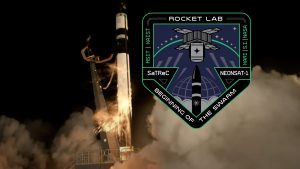
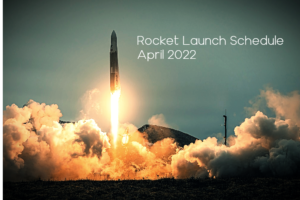
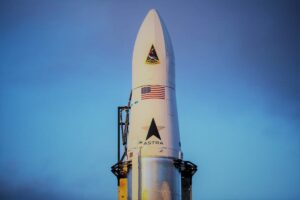
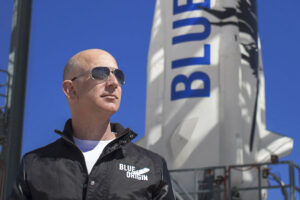


Thank you for your comment! It will be visible on the site after moderation.